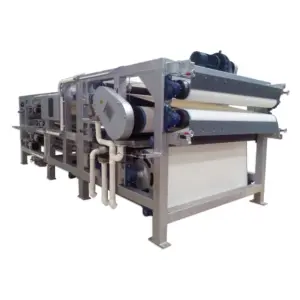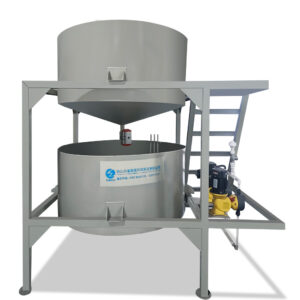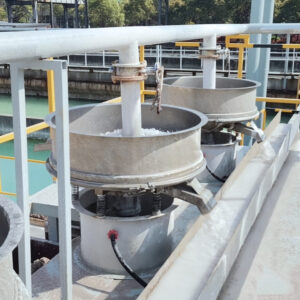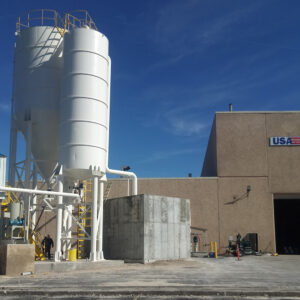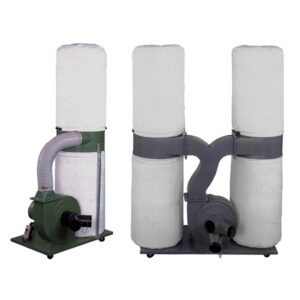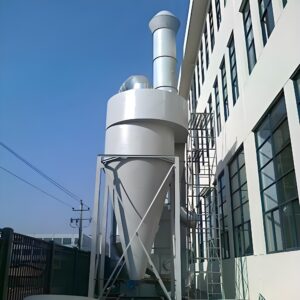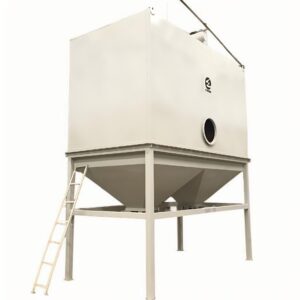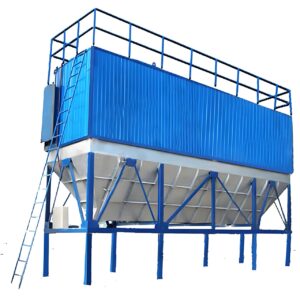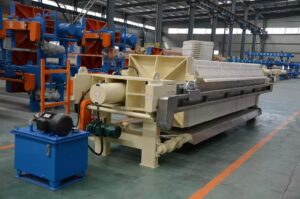Industrial facilities and municipalities face an increasingly complex web of regulatory requirements when managing wastewater discharge. The consequences of non-compliance have never been more severe, with penalties reaching millions of dollars and operational shutdowns becoming commonplace. Recent EPA enforcement actions have resulted in over $2.8 billion in penalties, highlighting the critical importance of understanding and implementing proper wastewater treatment standards.
This comprehensive guide addresses the mounting pressure businesses face from evolving environmental regulations, escalating compliance costs, and the technical complexity of modern treatment requirements. Without proper understanding of these standards, organizations risk catastrophic financial penalties, operational disruptions, and irreparable damage to their environmental reputation.
You’ll discover the essential framework for navigating federal and state regulations, industry-specific requirements, and emerging compliance trends that will shape the future of wastewater management. PORVOO Clean Tech has compiled insights from decades of industry experience to help you build a robust compliance strategy.
What Are Wastewater Treatment Standards and Why Do They Matter?
Wastewater treatment standards represent the regulatory framework governing the quality of water discharged from industrial, municipal, and commercial facilities into the environment. These standards establish specific limits for pollutants, chemicals, and other contaminants that can be present in discharged water.
Federal vs. State Authority
The Clean Water Act serves as the primary federal legislation, establishing baseline environmental wastewater standards across all states. However, states maintain the authority to implement more stringent requirements based on local environmental conditions and water quality objectives.
The EPA’s National Pollutant Discharge Elimination System (NPDES) program requires permits for any facility discharging pollutants into U.S. waters. These permits specify discharge limits, monitoring requirements, and reporting obligations tailored to each facility’s operations and receiving water body characteristics.
Core Pollutant Categories
| Pollutant Type | Common Sources | Typical Limits |
|---|---|---|
| Biochemical Oxygen Demand (BOD) | Organic waste, food processing | 30 mg/L monthly average |
| Total Suspended Solids (TSS) | Manufacturing, construction | 30 mg/L monthly average |
| Heavy Metals | Electroplating, mining | Varies by metal type |
| Nutrients (N, P) | Agriculture, municipal waste | Site-specific limits |
Industrial facilities must understand that standards vary significantly based on operational type, discharge volume, and receiving water sensitivity. In our experience, the most successful compliance programs begin with comprehensive characterization of discharge streams and receiving water conditions.
How Do Federal and State Water Quality Standards Differ?
The regulatory landscape creates a complex hierarchy where federal standards establish minimum requirements while states implement tailored approaches based on local conditions. This dual-layer system often creates confusion for multi-state operations.
Federal Baseline Requirements
EPA establishes technology-based effluent limitations that represent the minimum treatment level required across all states. These standards typically focus on conventional pollutants like BOD, TSS, and pH, with specific requirements varying by industrial category.
Recent federal initiatives have emphasized emerging contaminants, including pharmaceuticals, personal care products, and per- and polyfluoroalkyl substances (PFAS). The EPA’s fourth Unregulated Contaminant Monitoring Rule requires monitoring of 30 chemical contaminants, signaling future regulatory expansion.
State-Specific Variations
States like California and New York have implemented significantly more stringent requirements than federal minimums. California’s Water Quality Control Plans include site-specific objectives that can be 10-50% more restrictive than federal standards, particularly for nutrients and toxics.
“State water quality standards must be at least as stringent as federal requirements, but they can be more protective based on local water quality needs and designated uses,” notes Dr. Sarah Chen, Environmental Compliance Specialist at Stanford Environmental Institute.
The challenge for multi-state operations lies in managing compliance across jurisdictions with varying requirements, reporting timelines, and enforcement approaches. Advanced wastewater treatment systems often provide the flexibility needed to meet diverse regulatory requirements efficiently.
What Are the Key Industrial Effluent Standards by Sector?
Different industries face sector-specific regulations that reflect their unique discharge characteristics and environmental risks. Understanding these industrial effluent standards is crucial for developing effective treatment strategies.
Manufacturing Sector Requirements
The metal finishing industry operates under some of the most stringent requirements, with daily maximum limits for chromium, copper, and zinc often measured in parts per billion. Electroplating operations must achieve 99.9% removal efficiency for certain heavy metals while maintaining consistent pH levels between 6.0-9.0.
Textile manufacturers face increasingly complex requirements for color removal, with some states requiring 95% color reduction and complete elimination of certain azo dyes. The industry has seen significant investment in advanced oxidation processes to meet these evolving standards.
Food and Beverage Processing
Food processing facilities typically focus on organic loading parameters, with BOD limits ranging from 25-100 mg/L depending on receiving water classification. Meat processing plants face additional requirements for fats, oils, and grease (FOG) removal, with some jurisdictions requiring 99% removal efficiency.
| Industry Sector | Key Parameters | Typical Treatment Approach |
|---|---|---|
| Metal Finishing | Heavy metals, pH, cyanide | Chemical precipitation, ion exchange |
| Textiles | Color, BOD, suspended solids | Biological treatment, advanced oxidation |
| Food Processing | BOD, TSS, FOG | Dissolved air flotation, biological treatment |
| Pharmaceuticals | API compounds, solvents | Membrane bioreactors, activated carbon |
Emerging Industry Challenges
The pharmaceutical industry faces unique challenges with active pharmaceutical ingredients (APIs) and manufacturing solvents. Some European facilities have achieved 99.9% removal of API compounds using membrane bioreactor technology combined with ozonation.
It’s worth noting that enforcement trends show increasing focus on whole effluent toxicity (WET) testing, which evaluates the combined impact of all discharged constituents rather than individual pollutants. This holistic approach requires more sophisticated treatment strategies and comprehensive monitoring programs.
How Do Environmental Wastewater Standards Impact Business Operations?
Compliance with water treatment compliance regulations extends far beyond environmental protection, directly affecting operational efficiency, cost structures, and competitive positioning. The financial implications of modern wastewater standards reshape business planning and capital allocation decisions.
Operational Cost Implications
Treatment system operating costs typically represent 2-8% of total facility operating expenses, with energy consumption accounting for 40-60% of treatment costs. Advanced treatment technologies required for stringent standards can increase energy consumption by 25-40% compared to conventional systems.
However, facilities implementing comprehensive compliance programs often realize unexpected benefits. A recent study of 200 industrial facilities showed that proactive compliance investments resulted in 15-25% reduction in water consumption and 20-30% decrease in raw material waste.
Capital Investment Requirements
Modern treatment systems require substantial upfront investment, with costs ranging from $50,000 for small operations to over $50 million for large industrial complexes. The key factor determining investment success is selecting technologies that provide compliance flexibility as regulations evolve.
“The most successful facilities invest in treatment systems that exceed current requirements by 20-30%, providing operational buffer and regulatory flexibility,” explains Robert Martinez, Senior Process Engineer with 25 years of industrial treatment experience.
Competitive Advantages
Companies demonstrating exemplary environmental compliance often gain preferential treatment in supply chain partnerships and government contracting. Several major corporations now require suppliers to meet environmental standards that exceed regulatory minimums by significant margins.
The integration of advanced wastewater treatment solutions can transform compliance from a cost center into a competitive differentiator, particularly in industries where environmental stewardship influences customer purchasing decisions.
What Are the Latest Water Treatment Compliance Regulations?
The regulatory landscape continues evolving rapidly, with new wastewater discharge regulations emerging at federal, state, and local levels. Understanding these trends is essential for long-term compliance planning and capital investment decisions.
Recent Federal Developments
The EPA’s 2023 proposed rule for industrial wastewater includes new requirements for per- and polyfluoroalkyl substances (PFAS), with detection limits as low as 4 parts per trillion for certain compounds. This represents a 1000-fold increase in analytical sensitivity requirements compared to traditional pollutants.
New pharmaceutical manufacturing guidelines require 99.5% removal efficiency for active pharmaceutical ingredients, with some facilities achieving 99.9% removal using membrane bioreactor technology combined with advanced oxidation processes.
State-Level Innovations
California’s recently adopted Recycled Water Policy requires industrial facilities to evaluate water reuse opportunities, with mandatory implementation for facilities using more than 500,000 gallons per day. This policy effectively links wastewater treatment standards with water conservation objectives.
Texas has implemented real-time monitoring requirements for certain industrial categories, with continuous measurement of key parameters and automatic reporting of exceedances within 24 hours. This approach represents a shift toward immediate accountability rather than traditional monthly reporting cycles.
Technology-Driven Compliance
| Regulatory Trend | Technology Response | Implementation Timeline |
|---|---|---|
| PFAS monitoring | Advanced analytical methods | 2024-2025 |
| Real-time reporting | Automated monitoring systems | 2024-2026 |
| Water reuse mandates | Integrated treatment/reuse systems | 2025-2030 |
| Nutrients removal | Biological nutrient removal | Ongoing |
Emerging regulations increasingly emphasize pollution prevention and source reduction rather than end-of-pipe treatment. This shift requires facilities to evaluate process modifications and raw material substitutions as compliance strategies.
How to Ensure Ongoing Wastewater Discharge Compliance?
Maintaining consistent compliance requires systematic approaches that integrate monitoring, reporting, and continuous improvement. The most successful programs treat compliance as an ongoing operational priority rather than a periodic regulatory requirement.
Monitoring and Documentation Systems
Effective compliance programs implement tiered monitoring approaches with daily operational checks, weekly comprehensive testing, and monthly regulatory sampling. Automated monitoring systems can reduce compliance costs by 30-40% while improving data quality and response times.
Digital documentation platforms enable real-time tracking of treatment system performance, maintenance activities, and regulatory submissions. These systems provide early warning capabilities for potential compliance issues, allowing corrective action before violations occur.
Staff Training and Competency Development
Operator certification requirements vary significantly by state and facility type, with some jurisdictions requiring specific training for industrial wastewater treatment. Ongoing education programs should address regulatory updates, new technologies, and emergency response procedures.
“The difference between facilities that maintain consistent compliance and those that struggle with violations is usually operator knowledge and engagement, not equipment sophistication,” notes Maria Rodriguez, Compliance Director for a Fortune 500 manufacturing company.
Preventive Maintenance Programs
Treatment system reliability directly impacts compliance performance, with equipment failures accounting for 70% of discharge violations. Preventive maintenance programs should include daily equipment inspections, weekly performance testing, and monthly comprehensive system evaluation.
Technology Integration Benefits
Modern wastewater treatment systems incorporate predictive analytics and automated control systems that optimize treatment performance while minimizing operational costs. These technologies can reduce compliance management overhead by 25-35% while improving overall system reliability.
Regular compliance audits should evaluate regulatory changes, permit modifications, and operational improvements. The most effective programs conduct quarterly internal audits and annual third-party assessments to identify potential compliance gaps before they become violations.
What Are the Consequences of Non-Compliance with Water Quality Standards?
The penalties for violating water quality standards have increased dramatically in recent years, with enforcement agencies adopting more aggressive prosecution strategies and higher financial penalties. Understanding these consequences is crucial for risk management and compliance investment decisions.
Financial Penalties and Enforcement Actions
EPA enforcement actions in 2023 resulted in over $2.8 billion in penalties, representing a 40% increase from the previous year. Individual violations can result in penalties up to $64,618 per day, with cumulative penalties reaching tens of millions of dollars for sustained violations.
The largest single penalty in 2023 reached $85 million for a petrochemical facility that discharged untreated wastewater for over 18 months. This case demonstrates how seemingly minor violations can escalate into catastrophic financial consequences when not addressed promptly.
Operational and Legal Consequences
Non-compliance can result in immediate operational shutdowns, with facilities required to cease discharge until compliance is restored. These shutdowns can cost large industrial facilities $100,000-500,000 per day in lost production, often exceeding the original treatment system investment.
Criminal prosecution is increasingly common for willful violations, with corporate executives facing personal liability including imprisonment. Recent cases have resulted in sentences up to 3 years for environmental crimes, fundamentally changing corporate risk management approaches.
Reputational and Business Impact
Environmental violations create lasting reputational damage that affects customer relationships, supply chain partnerships, and employee recruitment. Social media amplification of environmental incidents can reach millions of consumers within hours, creating brand damage that persists for years.
“Environmental compliance violations can destroy decades of brand building overnight, with recovery taking years and costing far more than the original compliance investment,” warns Jennifer Thompson, Corporate Risk Management Consultant.
Long-term Regulatory Oversight
Facilities with compliance violations face enhanced regulatory scrutiny for 5-10 years following resolution, including more frequent inspections, additional monitoring requirements, and restrictions on operational modifications. This extended oversight significantly increases operational complexity and costs.
The most effective approach to avoiding these consequences involves proactive compliance management, regular system upgrades, and comprehensive staff training. Investment in reliable treatment systems and monitoring capabilities provides insurance against the catastrophic costs of non-compliance.
Conclusion
Wastewater treatment standards represent a complex but manageable regulatory framework that successful organizations navigate through systematic planning, appropriate technology selection, and ongoing compliance management. The key insights from this analysis demonstrate that proactive compliance strategies deliver both environmental protection and operational benefits.
Modern wastewater treatment standards require integrated approaches that address federal requirements, state-specific variations, and emerging regulatory trends. The most successful facilities invest in treatment systems that exceed current requirements while providing flexibility for future regulatory changes.
The financial risks of non-compliance have reached unprecedented levels, with penalties and operational disruptions far exceeding the cost of proper treatment system implementation. Organizations must evaluate compliance as risk management rather than regulatory burden, with appropriate investment in monitoring, treatment, and staff development.
Looking ahead, regulatory trends emphasize real-time monitoring, emerging contaminants, and water reuse integration. Facilities that prepare for these developments will maintain competitive advantages while contributing to environmental protection objectives.
Your next steps should include comprehensive evaluation of current compliance status, assessment of treatment system capabilities, and development of long-term compliance strategies. For organizations seeking reliable, efficient solutions, professional wastewater treatment systems provide the foundation for sustainable compliance and operational excellence.
What specific challenges does your facility face in meeting current wastewater treatment standards, and how will you prepare for the evolving regulatory landscape?
Frequently Asked Questions
Q: What are wastewater treatment standards and why are they important for environmental compliance?
A: Wastewater treatment standards are regulatory limits set to control the types and amounts of pollutants allowed in treated wastewater before it is released into the environment. They are crucial for environmental compliance because they ensure that industries and municipalities minimize pollution, protect natural water bodies, and safeguard public health. Meeting these standards helps prevent contamination of drinking water sources, preserves aquatic ecosystems, and promotes sustainable environmental management.
Q: Which regulations govern wastewater treatment standards in the United States?
A: The primary regulations include the Clean Water Act (CWA) and its National Pollutant Discharge Elimination System (NPDES) permit program. The Environmental Protection Agency (EPA) sets effluent quality standards that wastewater treatment facilities must meet to limit pollutant discharge. States may also impose additional requirements that align with or exceed federal regulations. Compliance specialists ensure facilities adhere to these rules by monitoring discharge levels and reporting data to regulators.
Q: What are the common wastewater treatment processes used to meet environmental compliance standards?
A: To comply with wastewater treatment standards, facilities typically use:
- Primary treatment: Removal of large solids and debris through physical means like screening and sedimentation.
- Secondary treatment: Biological processes such as activated sludge to break down organic matter and reduce biochemical oxygen demand.
- Tertiary treatment: Advanced processes including filtration, disinfection, and nutrient removal to meet stricter pollutant limits when required.
These combined steps remove a wide range of pollutants to meet discharge criteria.
Q: How can wastewater treatment plants ensure ongoing compliance with environmental standards?
A: Facilities can maintain compliance by:
- Obtaining and renewing the necessary permits and understanding applicable regulations.
- Conducting regular monitoring and testing of effluent quality.
- Keeping detailed records and submitting reports to regulatory bodies.
- Upgrading or optimizing treatment technologies as needed.
- Performing compliance audits to identify and address potential issues proactively.
These measures help avoid violations, fines, and environmental harm.
Q: What role do compliance specialists play in wastewater treatment environmental compliance?
A: Compliance specialists are key in interpreting and applying wastewater treatment standards. They ensure treatment plants adhere to permit conditions and effluent limits by overseeing monitoring programs, managing reporting duties, and coordinating with regulatory agencies. Their expertise helps facilities navigate complex federal and state regulations, implement corrective actions, and maintain sustainable operations within legal requirements.
Q: Why is it necessary to implement advanced treatment technologies in wastewater management for environmental compliance?
A: Advanced treatment technologies are necessary when standard primary and secondary processes do not sufficiently reduce pollutants to meet stringent environmental compliance standards. These technologies—such as tertiary filtration, nutrient removal, and disinfection—target specific contaminants like nitrogen, phosphorus, pathogens, and trace organics. Implementing them ensures treated wastewater is safe for discharge, thereby protecting ecosystems and public health while fulfilling regulatory obligations.
External Resources
Wastewater Treatment Compliance and Meeting Regulatory Requirements – This resource details how wastewater treatment facilities ensure compliance with local, state, and federal regulations, including the Clean Water Act and National Pollutant Discharge Elimination System, supporting full environmental compliance practices for both public and private entities.
Facts About Wastewater Bacterial Standards And Compliance – An in-depth discussion of bacterial standards in wastewater treatment, highlighting regulatory requirements, advanced treatment technologies, and practical steps for exceeding environmental standards in effluent discharge.
The Role of Water Treatment in Environmental Compliance and Sustainability – Explains the relationship between water treatment, regulatory compliance, and sustainability, emphasizing key standards, pollutant removal, and permitting obligations for industrial operations.
Navigating Wastewater Treatment Compliance – Fluence Corporation – Offers guidance on ensuring that wastewater treatment plants meet regulatory requirements, with focus on effluent limits, operational standards, and regulatory frameworks in the United States.
Effluent Guidelines | US EPA – The US Environmental Protection Agency’s dedicated page for effluent guidelines and standards, providing comprehensive information on pollutants regulated in wastewater discharges and the compliance measures required under federal law.
Wastewater Treatment Standards Overview – Water Environment Federation – Presents an overview of wastewater treatment standards, highlighting the importance of environmental compliance, typical treatment processes, and links to key regulatory and technical resources for professionals.

